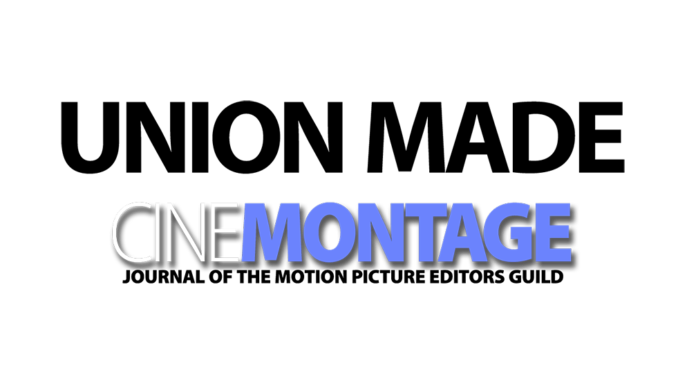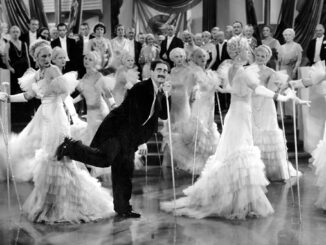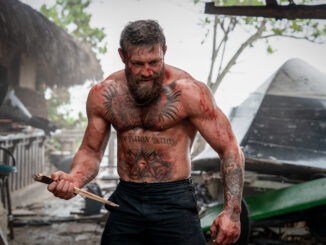
by David Handman, ACE
When I was growing up in Scarsdale, New York in the late 1960s, the film industry was going through a renaissance. Films like The Wild Bunch, Bonnie and Clyde, M*A*S*H and Easy Rider were revolutionizing the form, and the director was considered the auteur.
It soon came time to decide on a major during my junior year in high school in 1971, and I couldn’t think of anything else I’d rather do. I moved to California, went to USC and majored in Cinema. I quickly gravitated toward editing. Production felt like endless problem solving––whereas editing was about storytelling using a vocabulary of images and sounds, and that excited me. USC Cinema gave me a taste of what I might expect later, if I could hang in long enough.
When I graduated in 1976, the Editors Guild was closed to new members. Even if I was lucky enough to get in, back then the Guild mandated that one spend eight years apprenticing and assisting before becoming eligible to be an editor! A friend of my father’s set up an interview with Cos Bolger, the post-production supervisor for CBS Studio Center. Cos advised me to call the union every day to check how many people were on the availability list. When the list got down to about 30, a non-member could be hired. Three months went by without much change. Then in July, the fall television season geared up and the list began to shrink. I called Cos every week, and finally, in September, he hired me as an apprentice editor––and I got into the Guild.
Full circle, again and again. Perfect symmetry between the past and present. If you stay in this business long enough, happily the people in it become your life!
After four years of higher education, I was legally permitted to push a handcart from editing room to projection room and back again, carrying stacks of 1,000-foot reels of 35mm film! In between runs, I coded dailies, threaded machines that printed consecutive numbers every foot on the picture and the track to reference sync. It was mindless work, but CBS Studio Center was landlord to a huge amount of television, and I was meeting a lot of people. Jerry Dronsky was editing a new series, The Lazarus Syndrome, and hired me to assist.
I finally parked my handcart for good after a couple of years. Assisting in television meant keeping things organized on a schedule that didn’t allow for a tremendous amount of re-cutting. It was a pace that required speed and shortcuts, the opposite of what I experienced next on features. I was hired as a second assistant on Stayin’ Alive, the feature sequel to Saturday Night Fever––and had nine hours of dailies the first day, the equivalent of almost 50,000 feet of film! At the end of shooting, we had over a million feet, a record in 1983.
Organizing the library was incredibly monotonous work. I spent days labeling boxes and making head and tail leaders, and months reconstituting trims back into daily rolls. Then Paul Hirsch, A.C.E., hired me as his first assistant on Footloose. Paul inspired the kind of passion for editing I had felt at USC. After that, I was desperate to be an editor, and made a plan.
After four years of higher education, I was legally permitted to push a handcart from editing room to projection room and back again, carrying stacks of 1,000-foot reels of 35mm film!
Based on my experience at Studio Center, I knew that because series editing is rotational, an editor could leave a series at the end of an episode, which creates a lot of opportunity. I learned that Geoffrey Rowland, A.C.E., was leaving Cagney & Lacey to do Hill Street Blues, and was looking for an assistant. He assured me that I could help him cut as much as I wanted, as long as my assisting work was done. With that, I was back at CBS Studio Center again.
Right away, the sixth script of the season was moved up to air first, putting us on an accelerated schedule. I was able to help Geoff cut a lot on that episode, and he made sure that our executive producer, David Milch, knew it. Six weeks later, I got bumped up to editor on Hill Street Blues.
Soon after, Geoff recommended me to Barney Rosenzweig, the executive producer of Cagney & Lacey, for a new series, The Trials of Rosie O’Neill. Mitch Danton was Geoff’s apprentice on Cagney and became my assistant. Barney’s daughter, Erika, was our intern. After the show was cancelled, Erika and I started dating.
Flash forward five years: Geoff and Mitch were there to see Erika and I get married. Flash forward ten more years: Erika is there to see Geoff, Mitch and I, along with Eric Sears, A.C.E. (with whom I’d been at USC Cinema with 25 years earlier), and Bryan Horne accept the Eddie, and then the Emmy Award for Path to 9/11.
Full circle, again and again. Perfect symmetry between the past and present. If you stay in this business long enough, happily the people in it become your life!





